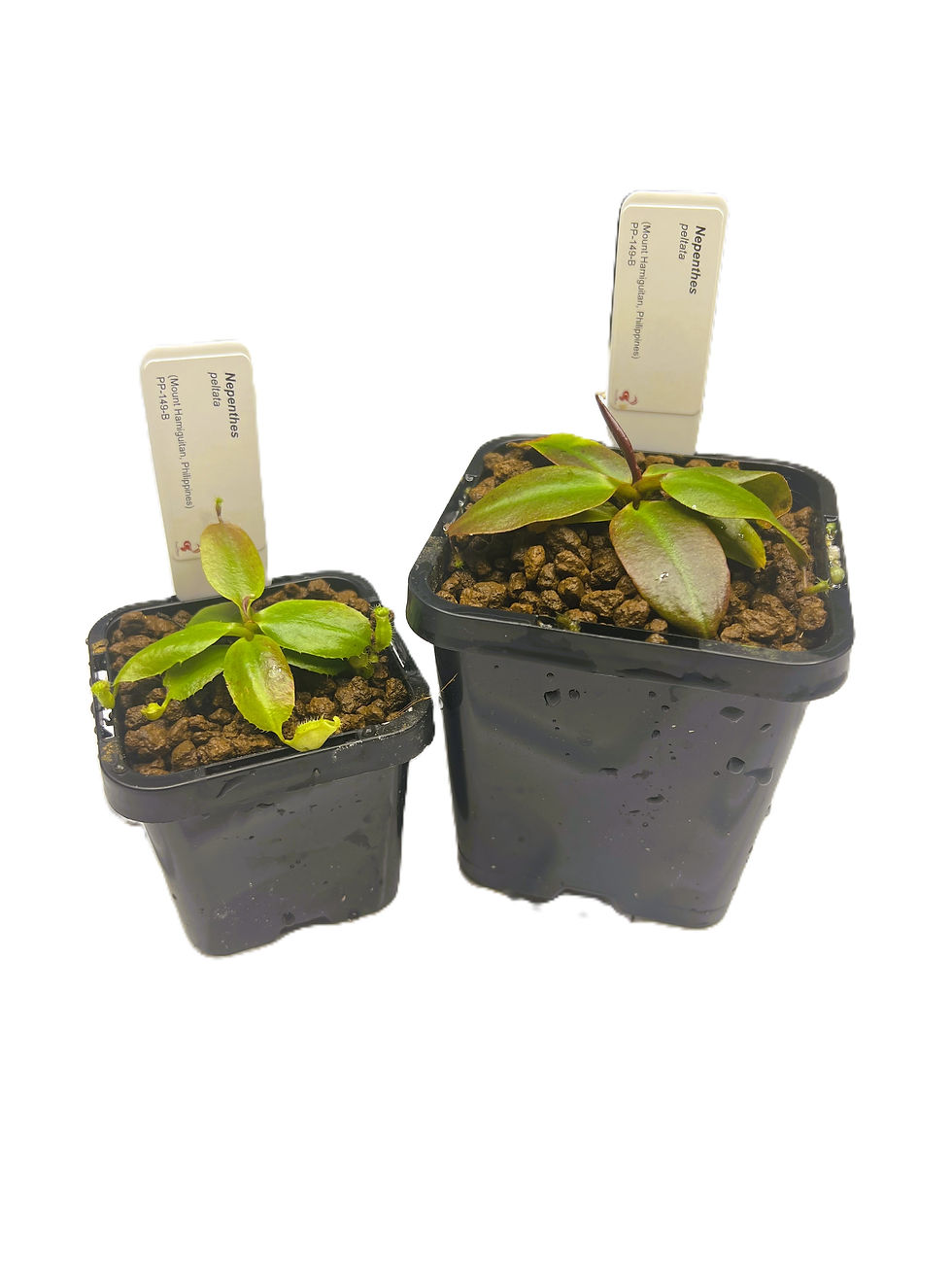Nepenthes peltata is a rare and visually striking tropical pitcher plant endemic to Mount Hamiguitan on Mindanao Island, Philippines. It was formally described in 2008 by Shigeo Kurata. The species name peltata refers to its distinctive peltate tendril attachment, where the tendril emerges from the underside of the leaf blade rather than the tip. This unique trait, along with its robust pitchers and dense indumentum, makes it one of the most distinctive Nepenthes species in the Philippines.
Habitat Overview: Climate and Soil
N. peltata grows terrestrially in a variety of habitats, including upper montane mossy forests, degraded secondary vegetation, ridge tops, cliff sides, and landslide zones, at elevations between 865 and 1,635 meters above sea level. The climate is cool, humid, and cloud-covered, with frequent rainfall. The soil is typically acidic and nutrient-poor, composed of moss, leaf litter, and rocky substrates.
Natural Range and Distribution
Nepenthes peltata is endemic to the upper slopes of Mount Hamiguitan, a UNESCO World Heritage Site in Davao Oriental, Mindanao. Its distribution is extremely limited, and upper pitchers have never been observed, suggesting the species may be functionally rosette-bound or rarely produces climbing stems. Its restricted range and specialized habitat make it vulnerable to environmental changes, although the protected status of Mount Hamiguitan offers some conservation security.
Physical Characteristics
N. peltata is a scrambling rosette plant, typically growing to 1 meter tall, though stems up to 3 meters have been recorded. Leaves are oblong, up to 50 cm long and 9 cm wide, with a rounded apex and a canaliculate petiole up to 7 cm long. The tendril attaches peltately, up to 27 mm from the leaf tip. The lower surface of the leaf is often dark red, contrasting with the dark green upper surface. The plant is covered in coarse, long, brown hairs, especially on the stem, petioles, tendrils, and leaf undersides.
The lower pitchers are large (up to 28 cm tall and 16 cm wide) and vary from ovate to ellipsoidal or urceolate. They feature fringed wings, a loosely cylindrical peristome up to 2 cm wide, and ribs that may form short teeth. The lid is elliptic or ovate, up to 8 cm long, often with a triangular basal keel and large nectar glands. Pitcher coloration is highly variable—ranging from yellow, orange, pink, red, to purple, often mottled with dark blotches.
Similar Species and Differentiation
Nepenthes peltata is most closely related to:
- N. mira: shares stout growth and dense indumentum but differs in lid structure and pitcher coloration.
- N. argentii: another Philippine species, but much smaller and alpine in habit.
- N. villosa group: shares robust pitcher traits but differs in geographic range and leaf morphology.
Its peltate tendril attachment, dense indumentum, and variable pitcher coloration make it easily distinguishable from other Nepenthes species

